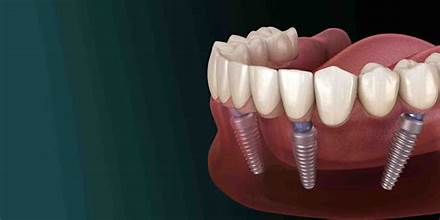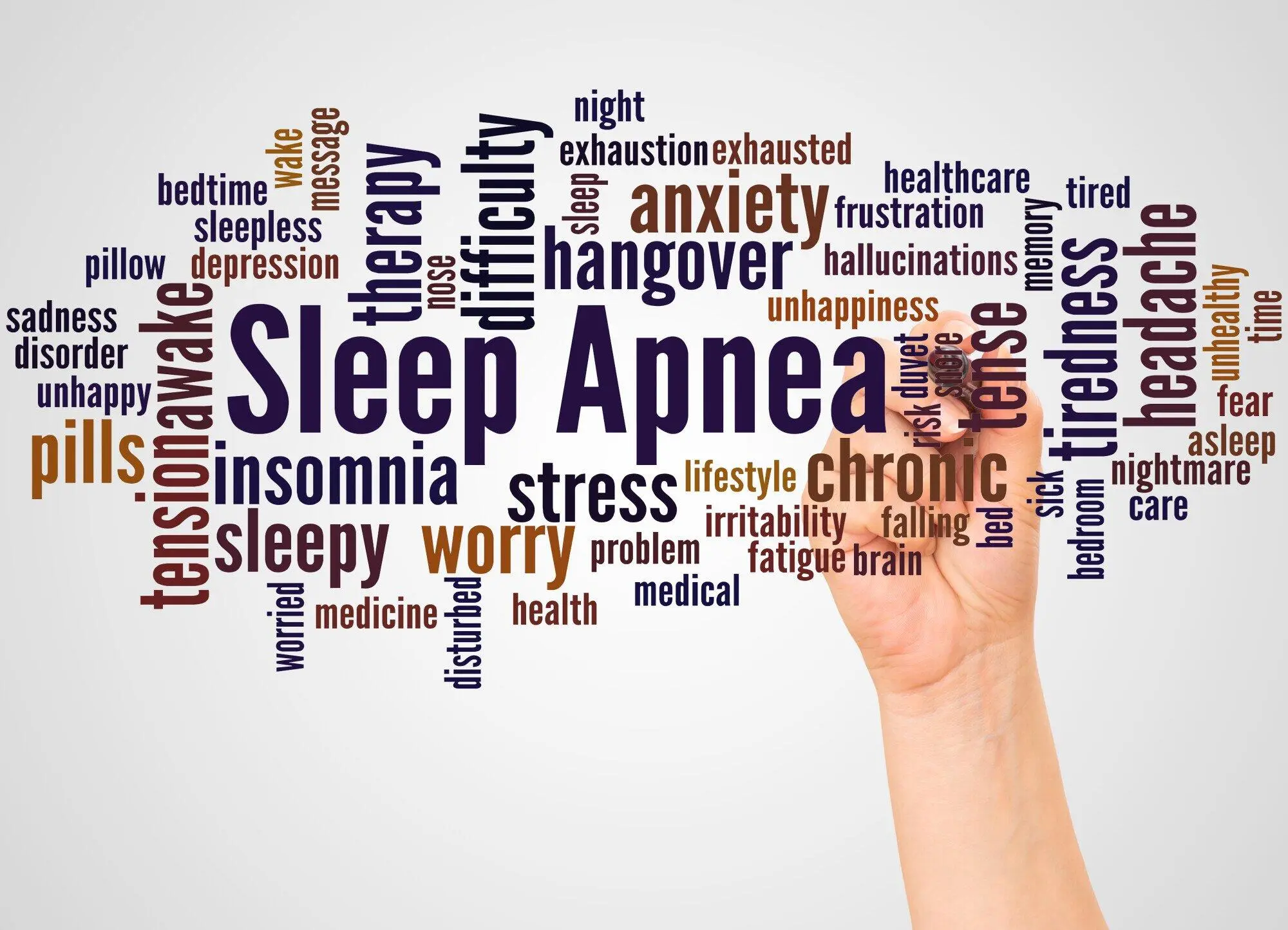HEALTH
The Next Big Thing in Weight Loss: Why Tesofensine is Gaining Popularity

The Need for Effective Weight Loss Solution
Many people are always looking for efficient ways to lose weight, which has led to interest in novel approaches that offer significant outcomes. Tesofensine is one of these that has generated a lot of conversation in the weight loss community. This medication was initially created to treat neurological conditions, but it has the ability to dramatically lower body weight. It may be a revolutionary weapon in the fight against obesity since it works by reducing hunger and raising feelings of fullness. Despite its potential, people should use tesofensine with caution and recognize that more thorough clinical trials are required to properly evaluate its safety profile and efficacy in long-term weight management plans.
Tesofensine’s ascent to prominence as a possible game-changer in the weight loss sector underscores how the strategy for combating obesity is changing, with a greater emphasis now being placed on pharmaceutical therapies that offer more noticeable results. The drug’s mode of action, which targets the central nervous system to decrease hunger and promote fullness, is what propels this shift and may result in significant weight loss without the need for significant lifestyle adjustments.
Its rise is due to the growing need for efficient weight-loss treatments that provide an alternative to conventional approaches, including diet and exercise, which many people find difficult to stick to. While tesofensine is still undergoing clinical review, academics, medical professionals, and obese people are all closely monitoring its development due to its potential to completely transform the weight reduction industry.
The Science Behind Tesofensine
Tesofensine initially developed for the treatment Alzheimer’s and Parkinson’s. It reduced appetite and raised energy expenditure, therefore scientists studied it as an anti-obesity medicine. The incredible effects of this drug on weight and neurological illnesses show the body’s complexity.
Tesofensine prevents the brain from reabsorbing dopamine, noradrenaline, and serotonin, its three main neurotransmitters. Increased synaptic neurotransmitter concentration boosts brain transmission. Serotonin is known for lowering hunger via satiating. Energy expenditure may increase with adrenaline-induced fight-or-flight. Rewards and motivation from dopamine may promote health and weight loss. Tesofensine reduces hunger and increases metabolism to help you lose weight.
Tesofensine may transform obesity treatment, according to clinical trials. The medication raises obesity-related cardiovascular risk factors and reduces body weight in these trials. This miracle drug may solve world obesity by causing large weight loss without food or exercise.
Tesofensine’s Impact on Metabolism
It’s interesting that tesofensine can alter weight loss strategies and increase metabolism. The medication may prevent the absorption of noradrenaline, dopamine, and serotonin. By altering the central nervous system, this increases metabolic efficiency and reduces appetite. By reducing caloric intake and raising energy expenditure, these two strategies may aid patients in losing a significant amount of weight.
Treating obesity requires reducing hunger. It suppresses hunger by preventing the absorption of serotonin, dopamine, and noradrenaline in the satiety region of the brain. This change in neurochemistry may significantly reduce hunger signals, enabling people to eat less calories and until they are content. This method helps people who struggle with obesity control their weight because it helps them deal with cravings and overeating.
Benefits of Tesofensine
This novel drug has demonstrated encouraging outcomes in clinical trials, indicating that it could aid in managing weight loss. Blocking brain chemicals involved in the regulation of appetite and fullness is effective. With this medication, weight loss could be substantial as energy expenditure rises and appetite decreases. Tesofensine may help conditions linked to obesity, such as type 2 diabetes and cardiovascular disease, by lowering body weight and improving metabolic parameters. Therefore, it has the potential to be beneficial in managing obesity.
When compared to other obesity medications, tesofensine may offer health advantages beyond weight loss and improvements in metabolism. For example, it has demonstrated positive safety in clinical trials, in contrast to alternative pharmacological approaches that might have significant adverse effects or badly combine with other drugs. Its novel mode of action, including multiple neurotransmitter systems, may mitigate tolerance, a significant side effect of long-term weight loss medications. If tesofensine enhances metabolic health as demonstrated by testing, it may be able to combat obesity and its consequences. It can thus be used for more than only losing weight.
Side Effects and Risks
Those who already have cardiac problems may be particularly concerned about the common side effects of dry mouth, nausea, sleeplessness, and an increased heart rate. Some people may also experience psychological distress or changes in mood while using tesofensine. Because of these dangers, healthcare practitioners must carefully consider each patient’s unique health profile and weight control objectives before deciding whether or not to prescribe the medication.
While other weight loss medications may cause similar side effects (e.g., dry mouth and insomnia), tesofensine has a somewhat higher risk of an increased heart rate and major mood swings. Newer treatments like liraglutide concentrate on diabetes management in addition to weight loss, potentially providing a wider therapeutic range with distinct risks, and other medications like orlistat may cause various gastrointestinal side effects. Consequently, medical practitioners evaluating tesofensine should examine not only its effectiveness but also the range of negative effects experienced by patients taking different medications for obesity.
Tesofensine and Lifestyle Changes
Research shows that it improves the efficacy of conventional weight-management techniques by primarily blocking the reuptake of neurotransmitters involved in hunger and metabolism regulation, such as dopamine, noradrenaline, and serotonin. When combined with a healthy diet and regular exercise, tesofensine can significantly increase weight reduction over food and exercise alone since it increases the satiety signal and metabolic rate. This synergistic impact emphasizes how pharmaceutical therapies and lifestyle changes might work together to better manage obesity.
Under the supervision of medical specialists, including tesofensine into one’s daily regimen should be done with a thorough plan that supports wellness and health objectives. In addition to taking the medication as prescribed, this integration calls for a dedication to a wholistic strategy that includes a healthy diet, consistent exercise, and—above all—mental health support. The success of this treatment mostly depends on the patient’s commitment to changing their way of life, with the drug serving as a catalyst rather than a stand-alone treatment. Frequent visits with medical professionals are necessary to track development, modify dosages as necessary, and handle any side effects. This way, you can be sure that incorporating tesofensine into daily life supports a long-term, healthful weight-management journey.
Tesofensine – a Promising Weight Loss Solution
The medical community is becoming more and more interested in tesofensine as a potentially ground-breaking weight-loss treatment that could give hope to those who are obese. This innovative drug demonstrates a strong efficacy in assisting patients in attaining notable weight loss by suppressing hunger and increasing satiety by acting on the central nervous system. This potential drug may soon redefine norms in the treatment of obesity thanks to continuing research and clinical studies, providing a new ray of hope for successful, long-term weight management.
The scientific community is quite intrigued by the encouraging outcomes of tesofensine, which emphasizes the need for more study and analysis of the drug’s safety and effectiveness. Future research must clearly define the long-term effects of tesofensine use as well as carefully evaluate any possible negative effects and the ideal dosage range.
Such thorough investigation will be essential to the drug’s involvement in managing obesity, guaranteeing that it can be a dependable, secure choice for those who require it. Using cutting-edge techniques and working together with different research institutions would probably speed up our learning and open the door to more individualized and successful obesity treatment plans.
HEALTH
Dental Implantology Will Always Involve Some Post-Surgery Pain

Are you considering getting dental implants? You’re not alone! Dental implantology is all the rage in dentistry right now, offering a reliable solution for those looking to replace missing teeth. But before you dive into this transformative treatment, there are some truths about post-surgery pain that you should know. Let’s uncover the honest facts about what to expect after undergoing dental implant surgery and how to manage any discomfort effectively.
Dental Implants Are Big in Dentistry Right Now
Dental implants have revolutionized the field of dentistry, offering a permanent and natural-looking solution for missing teeth. This innovative treatment has gained immense popularity in recent years due to its high success rates and long-term benefits.
Unlike traditional bridges or dentures, dental implants provide a stable foundation that mimics the structure of natural teeth. This not only enhances aesthetics but also improves functionality, allowing patients to eat, speak, and smile with confidence. But they do come with some risks – ongoing pain being one of them.
With advancements in technology and techniques, dental implant procedures have become more efficient and comfortable for patients. Accuracy is also vital – don’t end up with a messy operator – the more precise the implanting the better and the less chance of an unfavourable outcome. Yes, dentists can now customize treatment plans to suit individual mouth shapes, ensuring optimal outcomes for each case.
If you’re considering dental implants as a tooth replacement option, consult with your dentist to explore how this cutting-edge solution can transform your smile and overall oral health. An don’t be afraid to come across as a perfectionist – it may be the vibe that gets the very best performance out of your surgery.
All On 4 Are a Comprehensive Replacement Treatment
All On 4 dental implants have revolutionized the world of tooth replacement. This treatment involves securing a full set of new teeth on just four implants per arch. Unlike traditional dentures, All On 4 provides a permanent solution that looks and feels like natural teeth.
With All On 4, patients can enjoy restored confidence in their smile and enhanced chewing ability. The innovative design allows for a comprehensive restoration without the need for individual implants for each missing tooth. According to this dentist who does All On Fours in Lincoln Park, the surgery is usually completed in one day, reducing recovery time.
This advanced technique not only saves time but also reduces costs compared to traditional implant procedures. By strategically placing the implants at specific angles, All On 4 offers stability and support for the entire prosthesis.
All On 4 is an excellent option for those seeking a long-term tooth replacement solution that mimics the function and aesthetics of natural teeth seamlessly.
Yet it’s no secret that dental implant surgery including All On 4 can lead to post-operative pain. Many patients wonder, though, if dentists are always upfront about the discomfort they may experience after the procedure. The truth is, reputable dentists will typically discuss potential post-surgery pain with their patients before moving forward with any treatment.
Are Dentists Ever Honest About Post-Surgery Pain?
Being transparent about what to expect in terms of pain management is crucial for building trust and ensuring patient satisfaction. While some may downplay the discomfort involved in dental implantology, most dentists prioritize honesty and open communication when it comes to discussing post-operative pain.
By setting realistic expectations and providing detailed information on how to manage pain effectively following surgery, dentists can help alleviate concerns and ensure a smoother recovery process for their patients. Remember, it’s always important to have an open dialogue with your dentist about any worries or uncertainties you may have regarding post-surgery pain.
Dental Implantology Is Major Mouth Trauma
Implantology is not for the faint-hearted. It involves major mouth trauma as the dentist must surgically place metal posts into your jawbone to support artificial teeth. This process can cause discomfort and swelling, leading to post-surgery pain that varies from person to person.
The procedure itself may sound intimidating, but it’s essential for those looking to restore their smile and improve oral health. The good news is that advancements in technology have made dental implants more efficient and less invasive than ever before.
While the thought of undergoing such a procedure may be daunting, many patients find that the long-term benefits outweigh any temporary discomfort. Proper pain management techniques can help minimize post-surgery pain, allowing you to recover comfortably and enjoy your new smile sooner rather than later.
Severe Pain May Herald a Dental Emergency
While some post-surgery pain is expected after getting dental implants, severe and persistent pain should never be ignored. If you experience intense discomfort that doesn’t improve with prescribed medication or if you notice any signs of infection such as swelling, fever, or excessive bleeding, If you believe your severe pain may need an urgent solution then it’s crucial to seek immediate help from your dentist, or even go straight to hospital..
Being proactive about addressing severe pain can prevent potential complications and ensure the long-term success of your dental implant procedure. Remember, a trustworthy dentist will always prioritize your well-being and provide honest guidance throughout – and also after – your treatment journey.
Stay informed, stay vigilant, and remember that managing post-surgery pain is an essential part of the dental implant process. Trust in the expertise of your dental care provider to guide you through any challenges you may face along the way, but also trust your own panic button (instincts).
HEALTH
Sleep Soundly: The Ultimate Guide to the Best Oral Appliance for Sleep Apnea

Imagine waking up feeling refreshed, energized, and ready to tackle the day ahead. Sleep apnea no longer has to dictate the quality of your sleep or your life.
With the right dental appliances, you can say goodbye to sleepless nights and hello to peaceful slumber. But with so many options on the market, how do you know which one is right for you?
Don’t worry, we’re here to help! In this guide, we’ll take a deep dive into the best oral appliance for sleep apnea to help you make an informed decision.
Ready for a sound sleep that rejuvenates your body and mind? Let’s dive in!
Mandibular Advancement Devices
MADs are the most commonly recommended oral appliance for sleep apnea. They work by gently shifting your lower jaw forward, which helps to keep your airway open while you sleep.
This prevents the collapse of soft tissue at the back of your throat that causes snoring and obstructive sleep apnea. MADs are easy to use, customizable, and often more effective than other types of oral appliances.
Tongue Retaining Devices
For those who prefer not to have anything in their mouth while sleeping, TRDs are a great alternative. They work by holding the tongue in place to prevent it from falling back and blocking the airway.
They are also more compact and portable than MADs, making them a great option for travel. However, they can be a bit uncomfortable at first and not be as effective for more severe cases of sleep apnea.
Continuous Positive Airway Pressure Masks
CPAP masks are often the first line of treatment for sleep apnea. They work by delivering a continuous stream of air through a mask, keeping your airway open while you sleep.
While effective, CPAP masks can be bulky and uncomfortable, making it difficult for some people to adjust to wearing them every night. Additionally, they may not be a viable option for those who frequently travel.
Adjustable Airway Pressure Devices
Similar to CPAP masks, adjustable airway pressure devices deliver a constant stream of air, but with the added ability to adjust the air pressure. This can be beneficial for those who have trouble tolerating high pressures and experience discomfort or dry mouth.
Plus, they are more compact than CPAP masks, making them easier to travel with. However, they may not be as effective as other options for those with serious cases of sleep apnea.
Custom-Fitted Dental Mouthpieces
These are the most expensive and time-consuming options, but also the most effective for acute cases. A dentist will take impressions of your teeth and create a customized mouthpiece that holds your jaw in a forward position while you sleep.
This helps to keep your airway open without the need for bulky equipment or uncomfortable straps. However, it may not be covered by insurance and requires regular check-ups for adjustments.
Those seeking personalized treatment might explore solutions like this oral appliance therapy in Pasadena, CA. They offer customized devices designed to fit your needs and improve the quality of your sleep.
Exploring the Best Oral Appliance for Sleep Apnea
Choosing the best oral appliance for sleep apnea is a significant step towards better sleep and improved health. Remember, the right device is the one that you feel comfortable using every night.
Consult with a sleep specialist or a dentist experienced in this treatment to find your ideal match. Ready to reclaim your night’s rest and transform your days? Explore your options today and wake up to a brighter, more vibrant tomorrow.
Did you find this article helpful? Check out the rest of our blog now for more!
HEALTH
The Importance of Personalized Treatment Plans in Intensive Inpatient Therapy

Have you or a loved one ever needed help that felt truly tailored just for you?
In the world of mental health, one size hardly fits all, which is why the concept of personalized treatment plans in intensive inpatient therapy is changing lives. Imagine a plan that understands your unique struggles, strengths, and goals.
This article dives into why personalized plans are not just beneficial but essential in intensive inpatient therapy, offering a beacon of hope for those seeking a path to recovery.
Tailored Approach
A tailored approach in therapy means the treatment is made just for you. It looks at what you need and what your goals are. This way, you get help that truly fits what you’re going through.
When therapy fits your needs, you might feel better faster. It’s because every part of your treatment is chosen to help you the most.
Holistic Care
Holistic care entails considering a person’s health from all angles, not just one. It includes the health of your mind, body, and emotions. This method helps make sure that all the things that might affect a person’s healing are thought about.
When someone is in intensive hospital therapy, holistic care can include a lot of different types of intense treatment. This could be going to talk therapy, working out, or learning new ways to calm down. These all help the person get better as a whole.
Increased Engagement
When therapy is personalized, patients are more likely to get involved in their treatment plans. They feel that their views and preferences are heard and valued. This leads to a stronger commitment to attending sessions and following through with the treatment plan.
Increased engagement means patients play an active role in their recovery process. They work closely with their therapists to set goals and achieve them, making progress more visible and meaningful.
Efficient Resource Allocation
Efficient resource allocation ensures that the treatment resources are used in the best way possible. This approach aims to maximize the benefits to the patient while minimizing waste. It means every aspect of the therapy, from the time spent with therapists to the use of therapy tools, is optimized for effectiveness.
This method helps both the therapy providers and the patients. Providers can offer high-quality care without unnecessary expenditures, and patients receive focused treatment that is more likely to lead to successful outcomes. If individuals require continued support after intensive inpatient therapy, read this guide to IOP (Intensive Outpatient Program) for seamless transition and ongoing care.
Flexibility and Adaptability
Personalized intense therapy depends on being able to change and adapt. With this method, the treatment plan can be changed as the patient’s needs change over time. It makes sure that the therapy stays useful and helpful while the person is recovering.
This ability to change is very important for dealing with problems or changes in a patient’s state that come out of the blue. It lets doctors change their methods to best help the patient’s growth, making sure that they keep making progress toward their recovery goals.
Intensive Inpatient Therapy Leads the Way.
In conclusion, intensive inpatient therapy stands out as a powerful tool for healing and growth. This approach provides personalized, holistic care that can meet each person right where they are in their mental health journey.
With a focus on fitting the therapy to the person, not the other way around, it opens the door to a brighter, healthier future for those who take part.
If you gained new insights from this article, be sure to explore our blog for more enlightening content.

 TECHNOLOGY4 months ago
TECHNOLOGY4 months agoBlog Arcy Art: Where Architecture Meets Art

 ENTERTAINMENT1 week ago
ENTERTAINMENT1 week agoExploring the Kristen Archives: A Treasure Trove of Erotica and More

 LIFESTYLE1 week ago
LIFESTYLE1 week agoWho Is Sandra Orlow?

 ENTERTAINMENT4 days ago
ENTERTAINMENT4 days agoKiss KH: The Streaming Platform Redefining Digital Engagement and Cultural Currents

 LIFESTYLE4 months ago
LIFESTYLE4 months agoThe Disciplinary Wives Club: Spanking for Love, Not Punishment

 GENERAL4 months ago
GENERAL4 months agoWhat are stories of male chastity? A Comprehensive Guide

 EDUCATION4 days ago
EDUCATION4 days agoLingrohub Platform: A Complete Student Access Guide

 ENTERTAINMENT4 weeks ago
ENTERTAINMENT4 weeks agoMonkeyGG2: Your Personal Gaming Hub












